Renzo Piano's Genoa: A tour of the Italian architect's greatest buildings
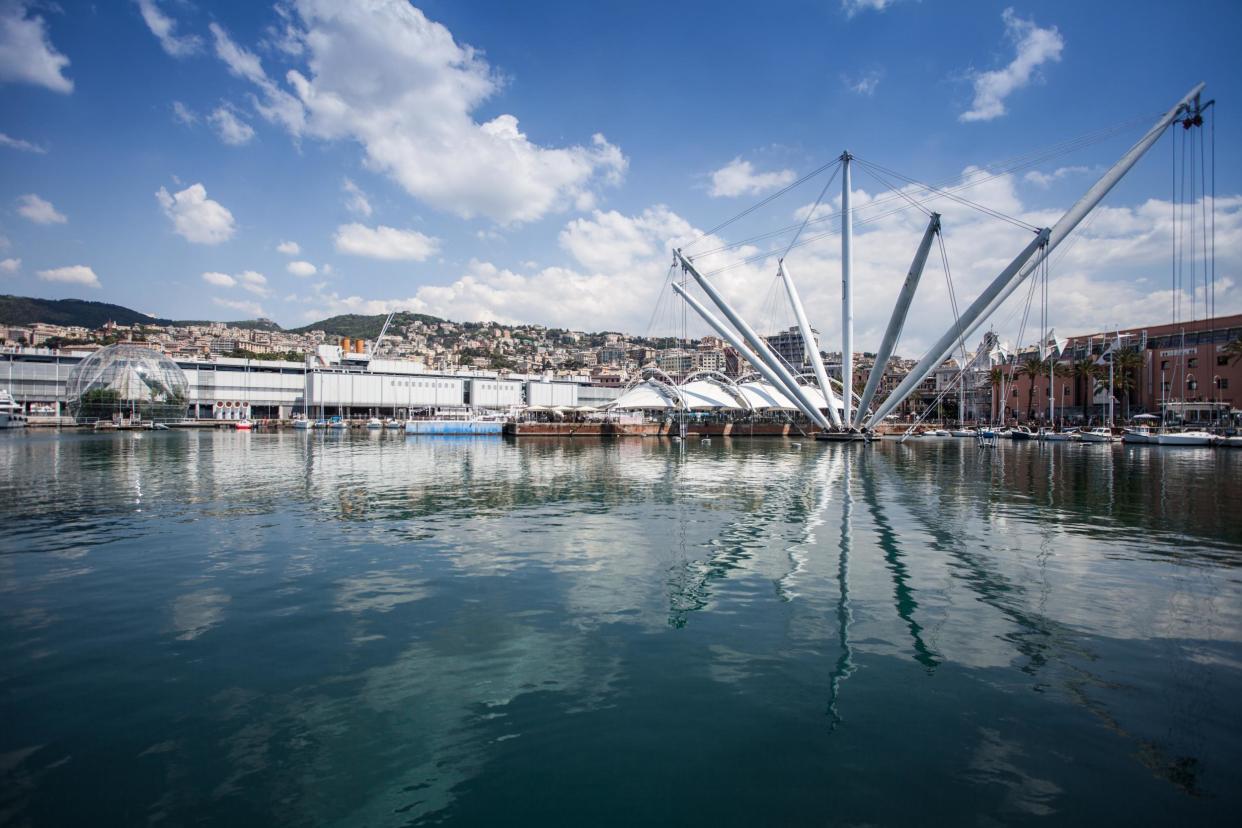
In September, a Renzo Piano exhibition opened at London’s Royal Academy, showcasing some of the Italian architect’s most iconic buildings.
But Piano, the architect of London’s Shard, Berlin’s Potsdamer Platz and the Centre Pompidou in Paris, made his biggest contribution to his hometown Genoa, where he was born in 1937.
This north Italian city trapped between mountains and sea, Italy’s sixth largest, is the capital of the coastal region of Liguria. Genoa has long been an inspiration for Piano's architecture: his love for the sea was born here, shown in the nautical theme of his work.
When on 14 August a section of the Morandi bridge collapsed in Genoa, killing 43 people, Piano pledged to create a new bridge for his city and bring a “positive moment of unity and cooperation”. His buildings embellish but also enrich urban spaces, often transforming them in the process. His structures are not only about visual effect but also the experience they provide.
Here are five of Renzo Piano’s architectural projects that have transformed Genoa.
Porto Antico (the old port)
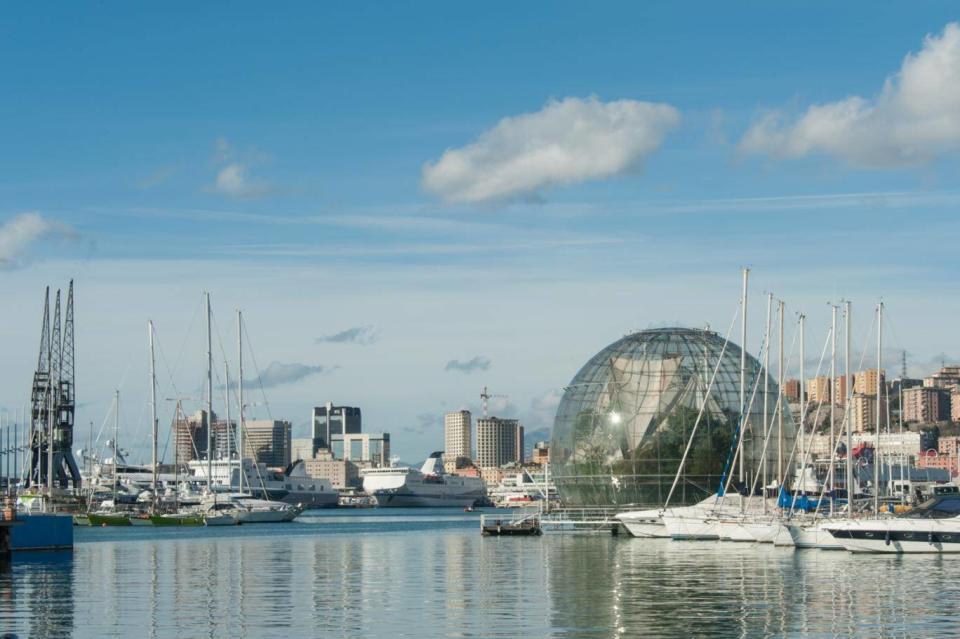
It’s a sunny Saturday in late September, and the old port’s cafes and restaurants buzz with diners; families stroll along the palm tree-lined promenade and the Via al Mare walkway; and children play football on the piazza.
But before its regeneration, Genoa’s historic port was inaccessible to the public. This changed with Piano’s ambitious project to redevelop the port for Expo 92, which commemorated 500 years since Genoa native Christopher Columbus discovered America.
Piano called the project “a great opportunity to rescue the historic city from decay”. His vision was to reconnect the city with the sea by creating a waterfront promenade and walkways, public spaces for entertainment and recreation, and converting 19th century warehouses into shops, a cinema and conference centre.
Today the old iron gates that created a physical divide between the harbourfront and the old town remain permanently open, and the pulse and cityscape of Genoa has been completely transformed as a result of the port’s redevelopment. This vast waterfront is today a much-loved public space.
The Genoa Aquarium
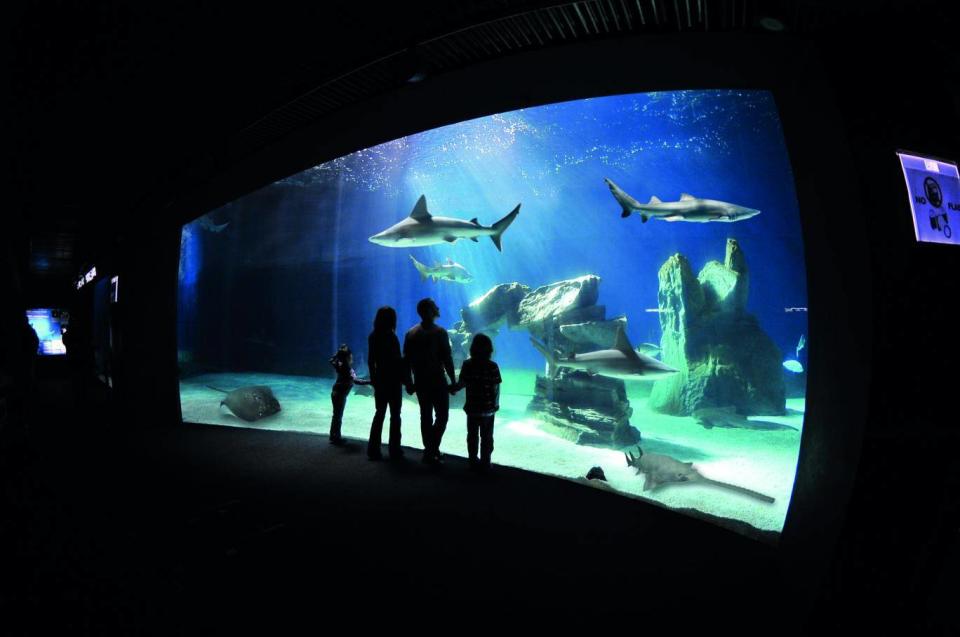
The Genoa Aquarium is Europe’s largest, with over 600 species of fish, marine animals, reptiles and birds. It’s also one of the old port’s landmark buildings, inaugurated during the 92 Expo.
Piano’s long rectangular building resembles a shipping container on stilts. A 1998 extension added a glass-walled building overlooking the sea, while in 2013, a new cetaceans pavilion dedicated to the study of whales, dolphins and porpoises was added. Linking to this is a 100-metre bow of a ship that looks like it could easily haul away the entire complex.
A tunnel in the new cetaceans pavilion passes underneath an overhead tank, creating the eerie impression of being underwater with dolphins gliding past. Another highlight is the enclosed glass walkway, from where open-air dolphin tanks overlook the city’s skyline: a colourful pastel patchwork of palazzi and historical buildings rising up the hillside.
Il Bigo
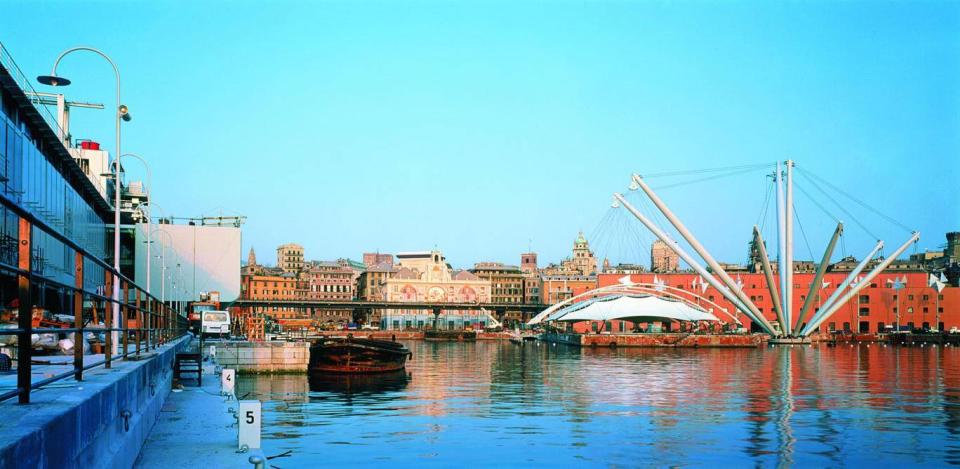
Another port landmark specially created for the 92 Expo is Il Bigo. Eight long arms reach diagonally into the sky from a platform in the sea, reminiscent of the dockside cranes once used to move goods that arrived by sea, but also resembling the masts of a ship. Extending from these giant tentacles are cables supporting the mast-like marquee roof of an open-air auditorium and venue for concerts in summer, and a skating rink in winter.
Suspended from one of these long arms is a lift that rises 40 metres up into the sky. This is not a fairground ride that makes your heart drop to your stomach: Il Bigo glides gently upwards, turning clockwise at the same time. At the top is another gift from Piano to the people: a 360-degree view over the port and rooftops of the historic old town, the Gulf of Genoa, and mountains to the north.
The Biosphere
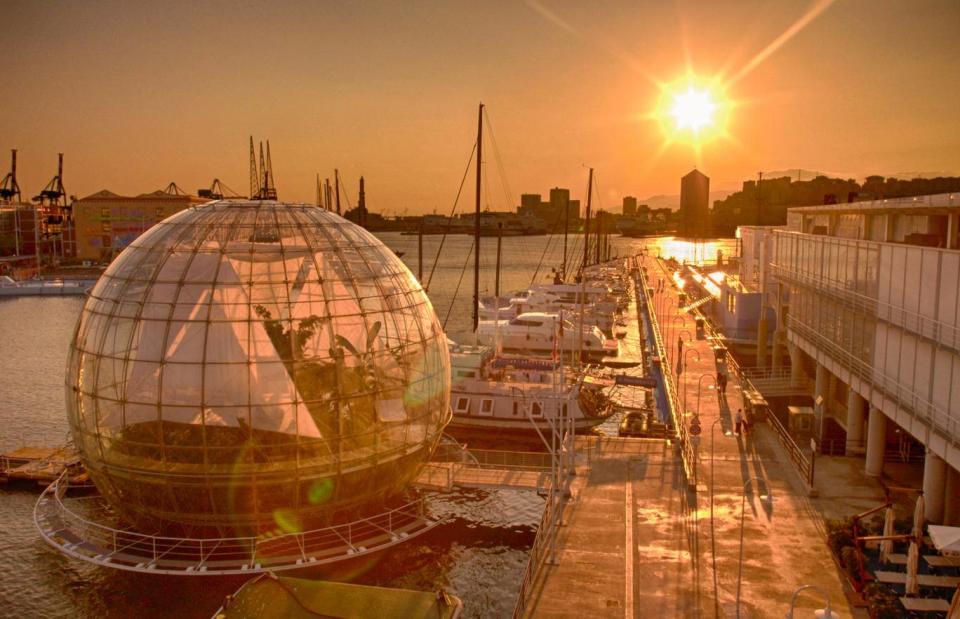
Floating on the surface of the water like a giant transparent beach ball is the Biosphere, dubbed La Bolla (the bubble) by locals. Designed by Piano for the 2001 G8 Meeting, it sits on the edge of a floating platform opposite the Genoa Aquarium. This delicate bubble of glass and steel, 20m in diameter, is home to a tropical forest of 150 bird and plant species. Inside grows shrubs of acacia karroo, tamarind trees, red mangroves, coffee plants, cinnamon and sapodilla; I spot tortoises crawling through the dense foliage, scarlet ibises from South America perched on cables above, and a pretty 22-year-old Moluccan cockatoo being trained to fly in its new domed home.
Renzo Piano Foundation
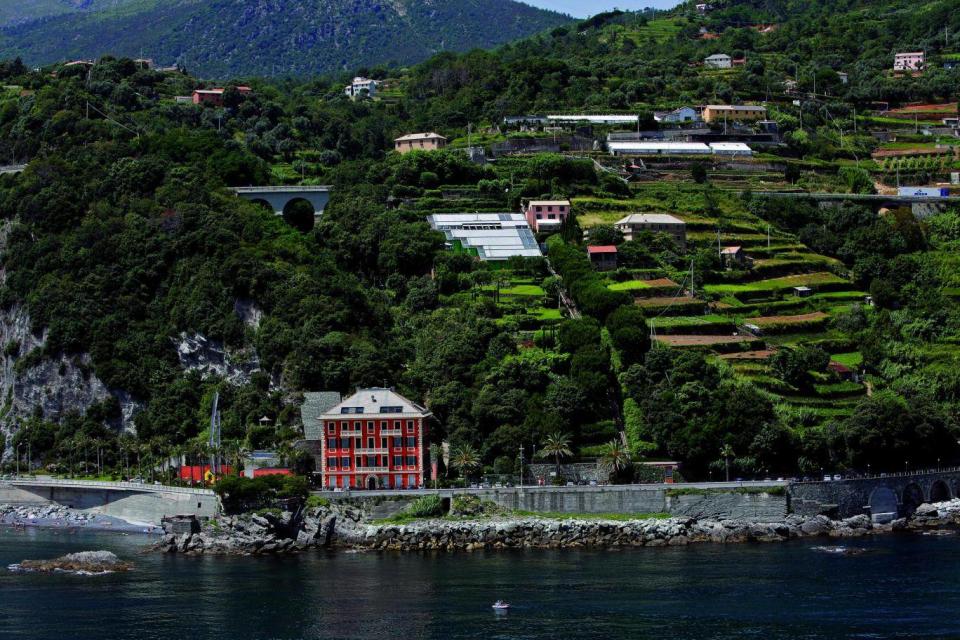
Perched above Vesima’s black gravel beach, 24km west of the city centre, is the handsome four-storey Villa Nave, a bright red period villa with green Venetian shutters. In 2008, Piano restored it and made it the home of the Renzo Piano Foundation.
Keeping with Piano’s principle of accessibility, the Foundation welcomes the architecturally curious two Saturdays a month for guided tours in Italian (French and English also possible). Part of the villa is the repository for the Renzo Piano Building Workshop’s vast archives, including over 15,000 sketches; while an upper storey of the villa provides free accommodation to student interns, another non-profit activity of the Foundation.
In the "window to the world" room on the ground floor, the high walls are covered in architectural drawings, photographs, and Piano’s trademark green ink sketches of projects currently in progress.
Piano’s Genoa workshop (others are in Paris and New York) rises behind Villa Nave in a row of glass buildings with sloped roofs clinging to the hillside in a series of stepped terraces, among umbrella pines and swaying bamboo groves. Unfortunately, you can only view it from the outside as it's not open to the public. But it's the building that sums up Piano best: a high-tech working space, full of sunlight, that merges easily with its natural environment.
Travel essentials
Getting there
British Airways, Ryanair and easyJet fly direct to Genoa from the UK from around £30 return.
Staying there
Double rooms at Hotel Continental start from £80 per night including breakfast.
More information
See Visit Genoa for more information. The Renzo Piano exhibition at the Royal Academy runs until 20 January.


